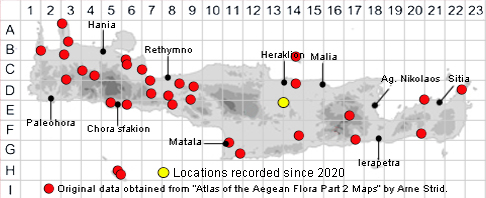
SPECIES DESCRIPTION
VICIA PARVIFLORA
Family and Genus:- See- LEGUMINOSAE/Sect. ERVUM
Common Name:- None
Homotypic Synonyms:- Vicia tenuissima, Vicia gracilis, Vicia laxiflora
Meaning:- Vicia (L) Binder, to bind, a name used by the Roman naturalist and
philosopher Pliny for vetch.
Parviflora (L) Small-flowered.
General description:- Very slender, subglabrous annual .
Stems:-
1) 15-40 cm, ascending to scrambling.
Leaves:-
1) Leaves, 2-5-paired.
a) leaflets, narrowly linear-oblong or those of lowest leaves broader.
2) Stipules, semi-hastate.
Flowers:-
1) Racemes, 2-5-flowered, lax.
2) Pedicels, filiform, exceeding the subtending
3) Calyx tube, campanulate, not gibbous, sparsely appressed-pubescent,
a) mouth, oblique.
b) teeth, unequal, shorter than the tube.
4) Corolla, 6-9 mm, pale bluish-mauve.
Fruit:-
1) Legume, 12-17 x 3-4 mm, brown, glabrous or pubescent.
2) Seeds, 4-6; hilum 1/12-1/8 of the circumference.
Key features:-
1) Lower calyx-teeth, shorter than the tube.
2) Leaflets, 0·5-3 mm wide.
3) Racemes, (1-)2- to 5-flowered, longer than the leaves.
4) Hilum, 1/12 -1 /8 of the circumference of the seed.
Habitat:- Damp, sometimes saline meadows, seasonally wet spots in scrub, olive
groves, orchards and dolines. 0-700(-1100) m.
Distribution:- Scattered throughout Greece and the Mediterranean. Scattered but
limit distribution on Crete, mainly to the west.
Flowering time:- Apr to early June.
Photos by:- Dr. Armin Jagel
